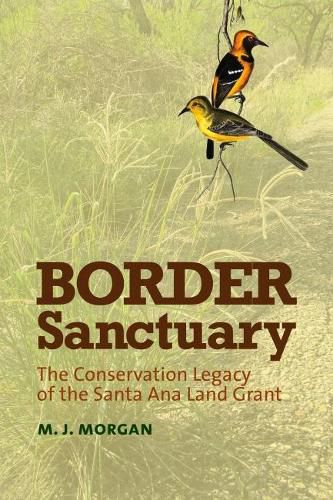Readings Newsletter
Become a Readings Member to make your shopping experience even easier.
Sign in or sign up for free!
You’re not far away from qualifying for FREE standard shipping within Australia
You’ve qualified for FREE standard shipping within Australia
The cart is loading…






The Santa Ana National Wildlife Refuge lies on the northern bank of the Rio Grande in South Texas, about seventy miles upriver from the Gulf of Mexico. In Border Sanctuary, M.J. Morgan uncovers how 2,000 acres of rare subtropical riparian forest came to be preserved in a region otherwise dramatically altered by human habitation.
The story she tells begins and ends with the efforts of the Rio Grande Nature Club to protect one of the last remaining stopovers for birds migrating north from Central and South America. In between, she reconstructs a hundred-year human and environmental history of the original two square leagues of the Santa Ana land grant and of the Mexican and Tejano families who lived, worked, transformed, and ultimately helped save this forest on the river’s edge.
As border issues continue to present serious challenges for Texas and the nation, it is especially important to be reminded of the deep connection between the region’s human and natural history from the long perspective Morgan provides here.
$9.00 standard shipping within Australia
FREE standard shipping within Australia for orders over $100.00
Express & International shipping calculated at checkout
The Santa Ana National Wildlife Refuge lies on the northern bank of the Rio Grande in South Texas, about seventy miles upriver from the Gulf of Mexico. In Border Sanctuary, M.J. Morgan uncovers how 2,000 acres of rare subtropical riparian forest came to be preserved in a region otherwise dramatically altered by human habitation.
The story she tells begins and ends with the efforts of the Rio Grande Nature Club to protect one of the last remaining stopovers for birds migrating north from Central and South America. In between, she reconstructs a hundred-year human and environmental history of the original two square leagues of the Santa Ana land grant and of the Mexican and Tejano families who lived, worked, transformed, and ultimately helped save this forest on the river’s edge.
As border issues continue to present serious challenges for Texas and the nation, it is especially important to be reminded of the deep connection between the region’s human and natural history from the long perspective Morgan provides here.